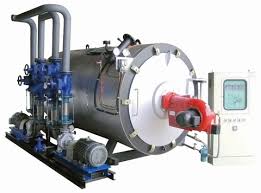
ທ.ວ. . 10, 2024 23:24 Back to list
Understanding the Functionality and Efficiency of Steam Boilers in Industrial Applications
Understanding Steam Boilers A Comprehensive Overview
Steam boilers have been a pivotal part of industrial and residential heating systems for centuries. Their ability to generate steam enables a multitude of applications, from powering locomotives and turbines to heating buildings and providing process heat in various industries. In this article, we will explore how steam boilers work, their types, applications, maintenance requirements, and the future of steam technology.
What is a Steam Boiler?
A steam boiler is a closed vessel that uses fuel or electricity to heat water to produce steam. This steam can then be distributed through pipes for various applications. The basic principle of a steam boiler is to convert energy stored in fuel into steam, utilizing the heat generated to raise the temperature and pressure of water. The efficiency of a steam boiler is critical, as it affects operational costs and environmental impact.
Types of Steam Boilers
Steam boilers can be classified into various categories based on their design, application, and fuel source
1. Fire-Tube Boilers In this design, hot gases pass through tubes surrounded by water. They are commonly used in smaller applications and are known for their simplicity and efficiency.
2. Water-Tube Boilers These boilers have water-filled tubes that are heated by external combustion. They can operate at higher pressures and are suitable for larger industrial applications.
3. Electric Boilers Instead of traditional fuel, electric boilers use electricity as a heat source. They are ideal for smaller scale operations and environments where emissions need to be minimized.
4. Biomass Boilers These utilize organic materials for combustion, providing a renewable energy source. They are becoming increasingly popular as industries move towards more sustainable practices.
5. Coal-Fired Boilers Historically significant, these boilers use coal as their primary fuel. Although they are being phased out in many regions due to environmental concerns, they remain an important part of energy production in some areas.
Applications of Steam Boilers
Steam boilers find applications across various industries. In manufacturing, they are essential for producing power for machinery and performing tasks like sterilization in food processing. In the energy sector, steam boilers are used in power plants to generate electricity through steam turbines.
boiler steam boiler

Moreover, residential settings utilize steam boilers for heating purposes, particularly in older homes with steam heating systems. Hospitals and laboratories also use steam for sterilization, ensuring a hygienic environment.
Maintenance of Steam Boilers
Regular maintenance is crucial to ensure the safe and efficient operation of steam boilers. This process includes
- Inspection Regular inspections help identify any potential issues before they become major problems. Inspectors check for leaks, corrosion, and the overall condition of the boiler.
- Water Quality The quality of water used in steam generation is vital. Impurities can lead to scaling and corrosion, affecting boiler efficiency and longevity.
- Safety Checks Regular testing of safety valves, pressure gauges, and other safety features is critical to avoid accidents and ensure compliance with regulatory standards.
- Cleaning Both fire-tube and water-tube boilers require routine cleaning to remove any built-up deposits that may impede performance.
The Future of Steam Technology
As the world leans towards more sustainable energy solutions, the future of steam boilers is evolving. Innovations such as combined heat and power (CHP) systems are gaining traction, allowing for the efficient use of energy by utilizing the steam generated for both heating and electricity production.
Furthermore, advancements in materials and technology are leading to the development of more efficient boilers that minimize emissions. The integration of smart technology is also beginning to make inroads into boiler systems, allowing for better monitoring, control, and optimization of performance.
Conclusion
Steam boilers play an essential role in modern industry and residential heating. Understanding how they work, their different types, applications, and maintenance requirements is vital for anyone involved in boiler operation or management. With ongoing advancements in technology and a shift towards sustainable practices, the evolution of steam boilers will continue to offer new possibilities for efficiency and environmental responsibility. As we embrace these changes, the steam boiler will remain a cornerstone of energy production and thermal management in the years to come.
-
High-Efficiency Commercial Oil Fired Steam Boiler for Industry
NewsJul.30,2025
-
High-Efficiency Biomass Fired Thermal Oil Boiler Solutions
NewsJul.30,2025
-
High Efficiency Gas Fired Thermal Oil Boiler for Industrial Heating
NewsJul.29,2025
-
High-Efficiency Gas Fired Hot Water Boiler for Sale – Reliable & Affordable
NewsJul.29,2025
-
High Efficiency Biomass Fired Hot Water Boiler for Industrial and Commercial Use
NewsJul.29,2025
-
High-Efficiency Biomass Fired Hot Water Boiler for Industrial Use
NewsJul.28,2025
Related PRODUCTS






















